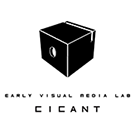Degenerate Art Redux Stereoscopy as an aid to art restoration [EN]
Bob Tate
Many highly significant artworks were criminally destroyed after the notorious Degenerative Art exhibitions of 1937, staged by the Nazi Party in pre-war Germany, in a futile attempt to lampoon modern art.
Whilst monochrome photographs of some of the lost paintings exist, many sculptures were lost, with apparently little visual record remaining.
One such artist was Margaret Moll (1884-1977), whose work was so “exhibited” and thought to be subsequently lost. However, and during the excavation of a new underground station in Berlin in 2010, (which were buried when a block of flats containing them collapsed during a wartime bombing raid), and their subsequent restoration.
This paper explores the uses of stereoscopic photography as an enhanced mechanism of cultural record and will argue for the extension of its use as a non-invasive and highly economical adjunct to curation.
It will also investigate new archival evidence for the survival of a small number of stereophotographs of lost sculpture, taken at such an exhibition, which may ofer assistance in the future restoration of such works.
The paper also suggests possible innovations for stereoscopic photography to proactively record and reproduce sculpture for research and restoration.
Organization


Partners





Campo Grande, 376, 1749 - 024 Lisboa | Tel.: 217 515 500 | Fax: 21 757 7006
Copyright © 2021 COFAC. Todos os direitos reservados. Gestão de conteúdos por Producao Multimédia
